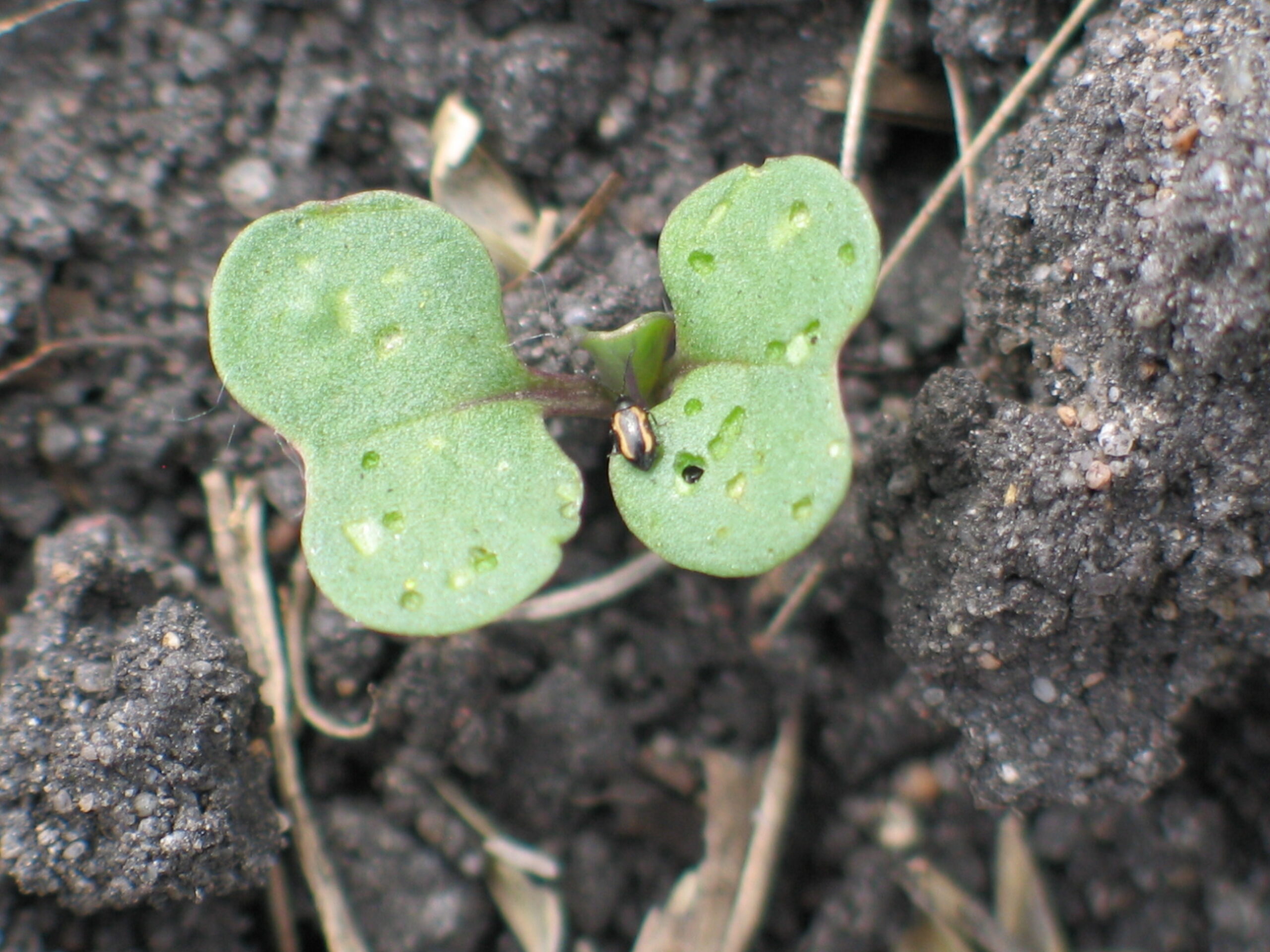Key Result
Results strongly indicate that applying foliar insecticide targeting flea beetles will unlikely help reduce blackleg infection in Western Canada.
Project Summary
Overview
From both a sustainable canola production and marketing perspective, it is important to manage blackleg in canola. While variety resistance is the cornerstone for blackleg management, an integrated approach, including crop rotation and chemical control, is important for continued reduction of blackleg in the field.
This study will assess the connection between flea-beetle feeding damage and blackleg, and the benefit of improved flea-beetle control and a new seed-treatment fungicide to blackleg control. A standard pyrethroid insecticide will be used for flea beetle control to create varying levels of feeding damage interacting with the fungicide seed treatment. The information helps develop a low-cost and more effective strategy for blackleg management in western Canada.
The objectives of this study are to:
- Assess the potential connection of cotyledon feeding by flea beetles to the stem infection by blackleg under field conditions
- Understand whether a better flea-beetle control will help alleviate the impact of blackleg
- Evaluate the efficacy of fluopyram seed treatment on reducing blackleg incidence under different levels of flea-beetle feeding.
This project will generate new information that can help improve or even revolutionize blackleg control in Western Canada by understanding the relevance of flea beetle feeding to blackleg and validating the efficacy of a novel cost-effective fungicide seed treatment to block the early infection via the feeding wounds. This research will have positive impact on our industry by addressing the risk of blackleg on both production and marketing fronts; lowered blackleg incidence/severity may have reduced inoculum load on seed and dockage.
Results
Under controlled conditions without added moisture, cotyledons were given mechanical wounds and then exposed to the pathogen at various times – zero, two, four, eight, 12 and 24 hours – post wounding. Wounds older than eight hours showed much lower disease incidence than younger wounds, and the pattern was similar on both susceptible and resistant cultivars. This shows that L. maculans infects through fresh wounds more readily than through older wounds or intact cotyledons when there is a lack of leaf-surface wetness.
Conclusions
This study provided strong evidence that wounds on cotyledons or lower leaves allow blackleg pathogen infection without the presence of leaf surface wetness. However, data from field trials failed to prove that controlling flea beetles with a foliar insecticide may help reduce blackleg infection. It appears that when inoculum is abundant, like in continuous canola used in this study, differences in wounding severity would have no significant effect on the success of blackleg infection. Results strongly indicate that applying foliar insecticide targeting flea beetles will unlikely help reduce blackleg infection in Western Canada.






